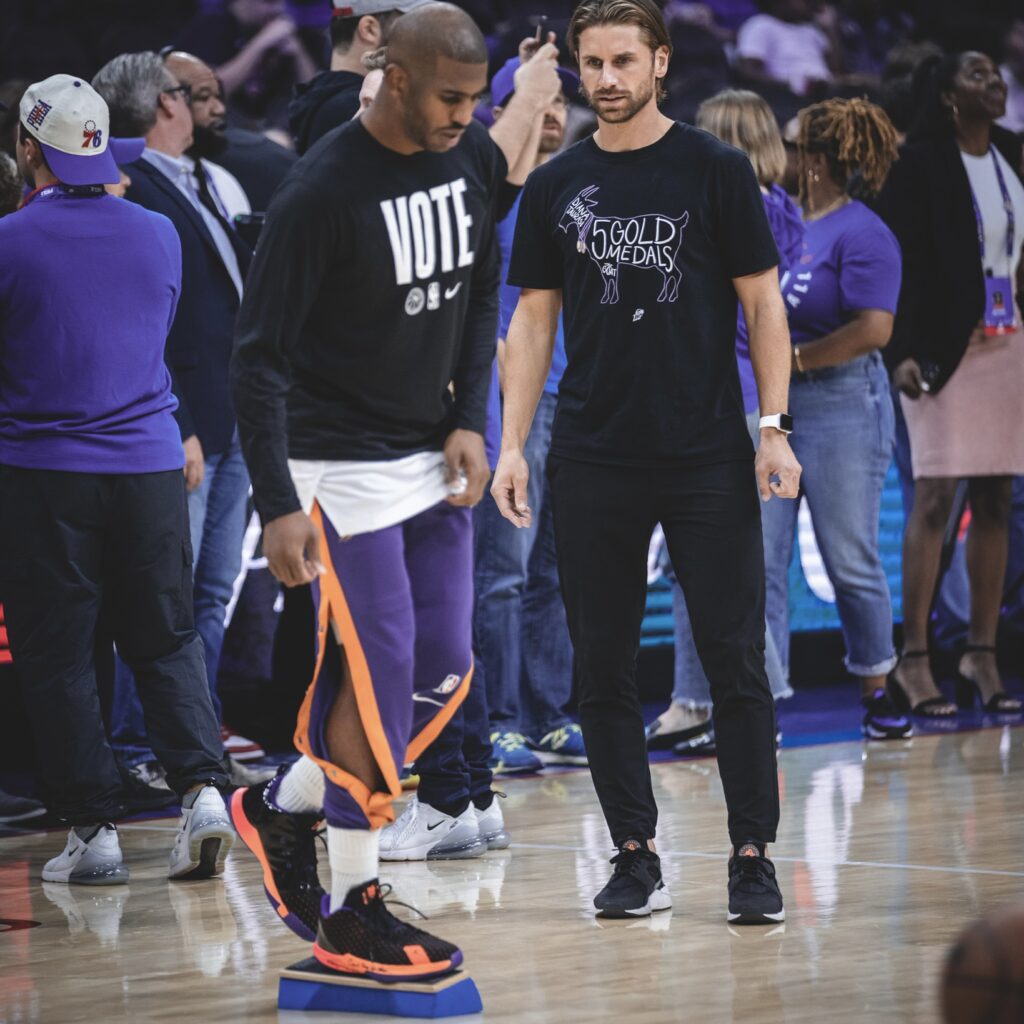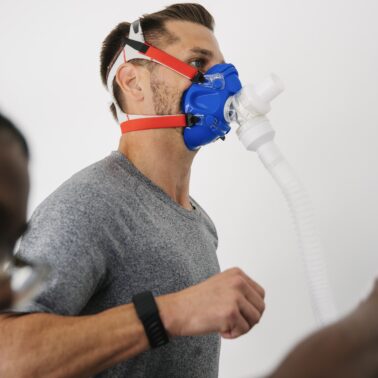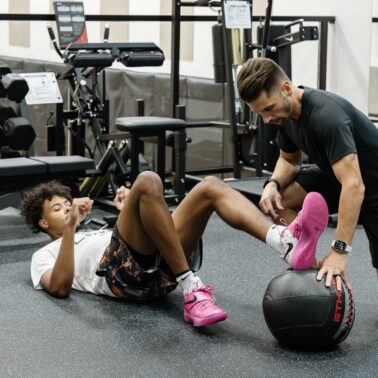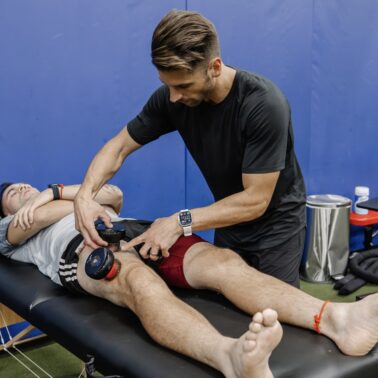Approximate Read Time: 23 minutes
“True fitness isn’t just conditioning—it’s the integration of body, brain, and preparation across physical, technical, tactical, and psychological domains.”
What You will learn
- Why fitness extends beyond physical conditioning alone
- How energy systems fuel athletic performance and longevity
- Practical strategies to train physical, tactical, and mental fitness
What Is Fitness? A Holistic Performance Lens
When most people think of fitness, they think of conditioning: how fast you can run, how much weight you can lift, or how long you can last without breaking down. But within the 3P Model, fitness is something bigger. It’s not just physical—it’s a composite of physical, technical, tactical, and psychological preparedness.
This broader definition is closer to the dictionary meaning: “the quality of being suitable to fulfill a particular role or task.” By that standard, an athlete’s fitness isn’t measured solely by VO₂max or squat max. Instead, it’s measured by whether their physiology, skills, tactical decision-making, and mental readiness can combine to meet the exact demands of their sport.
Take Lionel Messi as an example. His GPS metrics show he walks more than most of his teammates during a game. To the untrained eye, this might look like a lack of fitness. But his tactical awareness and sport IQ allow him to conserve energy and exploit space at the right moments. His “fitness” is in his suitability for the role—not in racking up the most sprints.
This lens forces performance coaches and therapists to stop treating fitness as one-dimensional. Conditioning matters, but so does skill execution under fatigue, tactical economy of movement, and mental resilience when pressure mounts.
“Fitness is suitability—an athlete’s ability to meet the precise demands of their sport.”
Physical Preparedness: Energy Systems and Conditioning
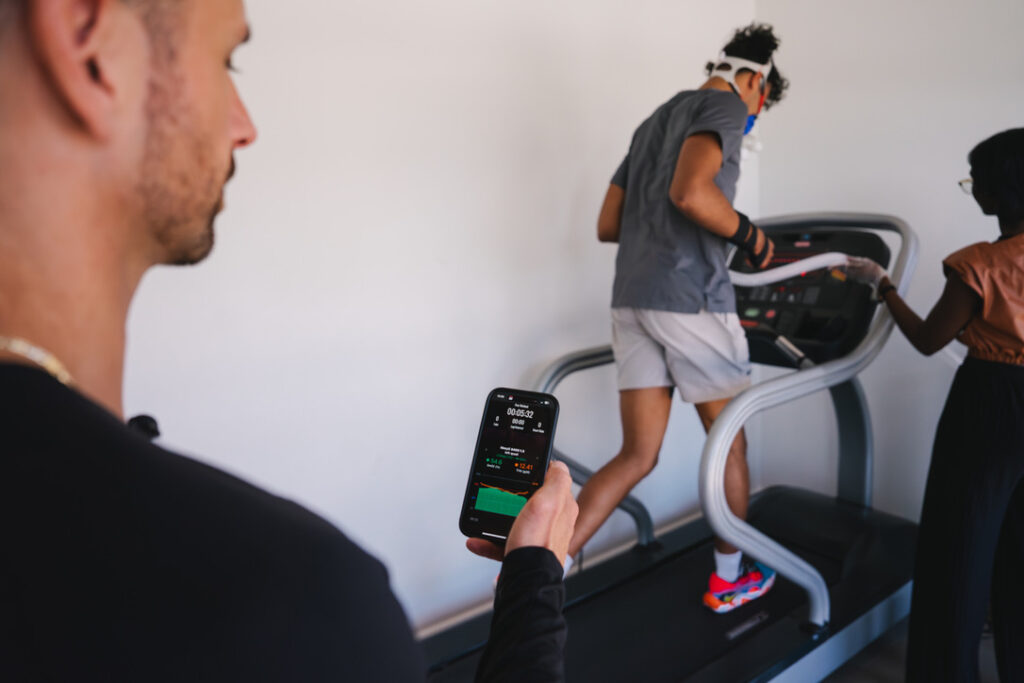
At its core, physical fitness is about whether the body can repeatedly meet the demands of sport. In team sports, that usually means producing high-intensity bursts of power, then recovering quickly enough to repeat them over and over again. This capacity is driven by the body’s energy systems—the phosphocreatine (alactic), anaerobic glycolytic, and aerobic pathways.
Traditional models once suggested these systems work in neat, timed windows: 10 seconds for alactic, two minutes for glycolytic, everything beyond for aerobic. But in reality, they act more like the strings of a puppet show: each one pulling at once, with different degrees of dominance depending on the task (Noakes, 2012 ).
This integration explains why training the aerobic system isn’t just about endurance. Aerobic fitness underpins recovery between sprints, repeated jump ability, and even injury resilience. Players with higher aerobic capacity recover faster between high-intensity bouts and are less likely to break down when workload spikes (Malone et al., 2016).
“VO₂max is more than a performance metric—it’s a survival metric.
Even more striking, aerobic fitness isn’t only about performance—it’s about survival. VO₂max, the gold standard measure of aerobic fitness, is one of the strongest predictors of long-term health. In a cohort of more than 120,000 patients, those in the elite VO₂max group had an 80% lower risk of all-cause mortality compared to the lowest group, with no observed ceiling effect (Mandsager et al., 2018).
So when performance therapists train the aerobic system, they aren’t just building game readiness. They’re also adding years of health and resilience.
The Three Traditional Energy Systems Explained
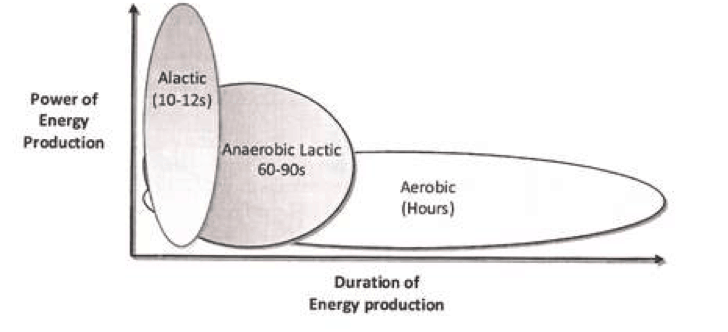
Every sprint, jump, or shift relies on the body’s three energy systems:
- Phosphocreatine (PCr / Alactic system) – fuels explosive work lasting ~10 seconds. Relies on stored ATP and phosphocreatine.
- Anaerobic Glycolytic System – bridges the gap for efforts lasting 30 seconds to ~2 minutes. Produces ATP quickly, but yields lactate and hydrogen ions.
- Aerobic System (Oxidative) – slower but highly efficient. Uses oxygen to break down carbs, fats, and proteins for long-duration work.
Traditional models suggest clean transitions between them, but reality is more integrated. As Hughson notes, oxygen uptake (O₂ kinetics) responds dynamically, with all systems pulling strings simultaneously to meet demand. This integration is why even sprinters benefit from aerobic capacity and why endurance athletes still train explosive qualities.
Hydrogen, Respiration, and the Real Driver of Fatigue
For decades, lactic acid was blamed for fatigue and soreness. But that story is incomplete. What really matters is hydrogen ion accumulation.
During glycolysis, as glucose breaks down to produce ATP, hydrogen ions build up. This lowers muscle pH, creating an acidic environment that interferes with contractile proteins and enzyme activity. The result: the familiar “burn” of fatigue.
“Hydrogen is king. Lactate isn’t fatigue—it’s fuel.”
The body responds with buffering systems (like bicarbonate) and increased respiration to clear carbon dioxide and restore pH. Heavy breathing in high-intensity intervals isn’t just oxygen debt—it’s the respiratory system fighting acidity to keep the muscles working.
Lactate, meanwhile, is not the villain. It’s actually a valuable fuel. Through the Cori cycle, lactate shuttles from muscle to liver to be recycled into glucose, or it’s oxidized directly by the heart and brain as an energy source (Noakes, 2012 ). In fact, better lactate clearance is a marker of elite endurance capacity.
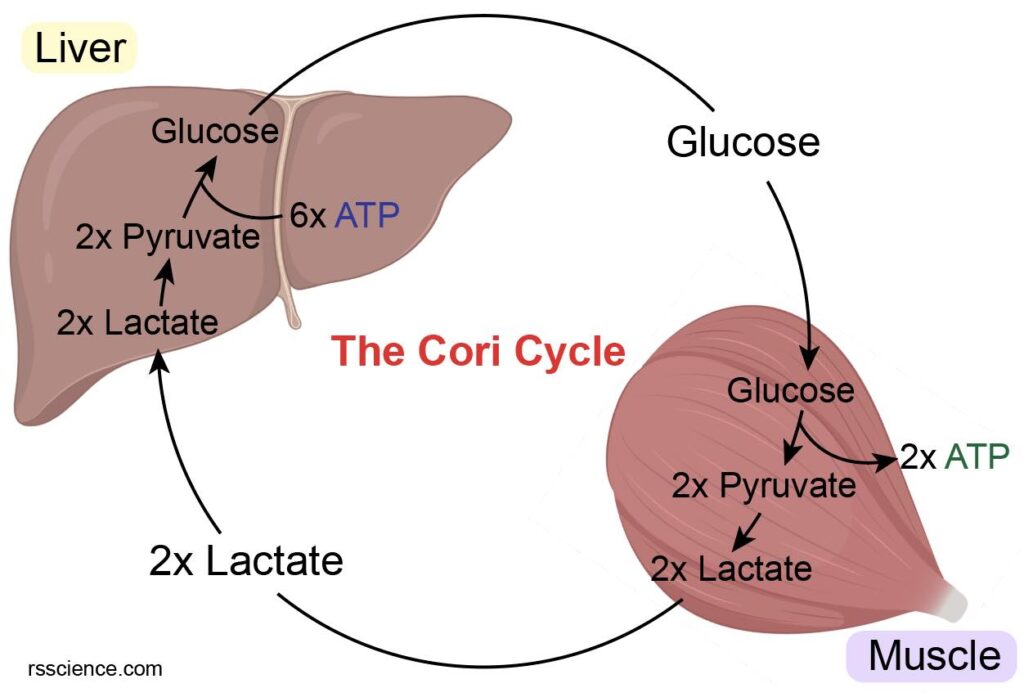
Technical Preparedness: Skill Meets Physiology
Conditioning doesn’t exist in a vacuum. Technical skill is the interface between physiology and sport execution. A basketball player may have the VO₂max of an Olympic rower, but if their shooting mechanics fail under fatigue, the system breaks.
Technical preparedness is about the efficiency of skill execution in environments that replicate competition. That’s why tactical periodization and integrated training matter: conditioning should be blended with technical reps, not separated into silos.
For example, Zone 2 aerobic work may build a strong engine, but if it’s not layered into sport-specific skills, the adaptation is incomplete. In soccer, running laps may improve capacity, but integrating aerobic conditioning into possession drills or positional play games ensures the physiology connects directly to the technical demands of the sport.
As Tim Noakes argued, human performance is a complex system, not a machine with one governor (Noakes, 2012 ). Skill efficiency, decision-making, and physiology all interact to determine output. Performance therapists may not directly coach skill mechanics, but by collaborating with skills coaches, they ensure technical proficiency develops under the right conditioning load.
Tactical Preparedness: Game IQ and Efficiency
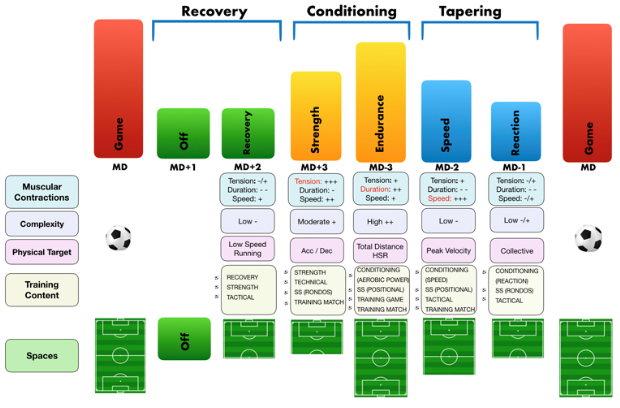
In elite sport, the most conditioned athletes are not always the most effective. GPS and camera-based tracking often reveal a surprising trend: rookies record the highest sprint counts, distances, and accelerations. Meanwhile, veterans and All-Stars often rank near the bottom in physical output.
Why? Because tactical acumen allows them to move less, but achieve more. Lionel Messi is the most visible example. He spends much of a match walking, scanning, conserving energy—yet when the moment comes, he has the fitness to sprint, strike, and decide the game. His fitness is tactical, not just physical.
Tactical preparedness is the ability to align physiology with sport IQ. Athletes with strong tactical awareness position themselves more effectively, make quicker decisions, and reduce wasted energy. This results in lower external load, but often higher impact on performance outcomes.
“Tactical fitness is the art of doing less, but achieving more.”
The acute:chronic workload ratio illustrates this balance well. Spikes in weekly load dramatically increase injury risk, but players with higher aerobic fitness and more playing experience show greater resilience (Malone et al., 2016). Fitness here isn’t just about running volume—it’s about how the body and brain distribute that work.
Psychological Preparedness: The Mental Side of Fitness
An athlete can have elite VO₂max, flawless skills, and tactical awareness, but still falter if their psychological readiness crumbles under pressure. Finals, championship games, and elimination matches reveal this truth: mental fitness is as critical as physical.
Psychological preparedness includes focus, resilience, stress management, and the ability to execute under fatigue. These traits are not separate from physiology—they interact with it. High-intensity intervals don’t just tax the legs; they tax the mind’s ability to sustain concentration and decision-making when the body burns.
For example, detraining research shows that the loss of conditioning doesn’t just reduce VO₂max—it raises perceived exertion, accelerates fatigue, and erodes confidence (Mujika & Padilla, 2000). Conversely, athletes with robust aerobic systems report lower effort levels at given workloads, conserving mental bandwidth for tactical execution.
“Fitness is as much about handling chaos in the mind as it is about producing force in the body.”
Simulated pressure scenarios in training—such as free throws at the end of conditioning drills or penalty kicks after sprint sessions—train athletes to sustain mental performance under duress. This mental side of fitness ensures not only physical readiness but also psychological resilience across long seasons.
Body Composition and Nutrition: Building the Engine
If fitness is “suitability for a role,” then body composition is the raw math behind it. Newton’s Second Law reminds us that Force = Mass × Acceleration. In sport, too much non-functional mass makes acceleration harder; too little lean muscle mass limits force production and resilience.
A high muscle-to-fat ratio enhances power, endurance, and durability, while excess fat mass increases fatigue risk. That’s why manipulating body composition—whether through hypertrophy blocks, fat loss phases, or re-composition—isn’t just aesthetic. It’s foundational to performance.
Nutrition is equally critical. Macronutrients fuel energy systems: carbohydrates for glycolytic bursts, fats for long-duration aerobic efforts, and protein for repair. Micronutrients, from iron to vitamin D, influence recovery, oxygen transport, and neuromuscular function. Without a nutritional strategy, the “engine” lacks the resources to perform.
Heart Rate Zones and the Rise of Zone 2
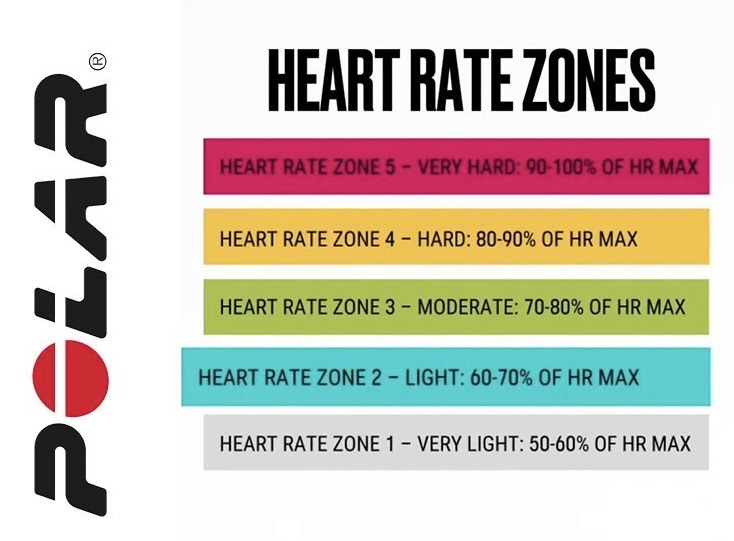
Heart rate zones are a practical way to target specific physiological adaptations. Of particular interest is Zone 2 training (60–70% HRmax).
Zone 2 improves mitochondrial density, capillarization, and stroke volume. It’s been championed by performance scientists and longevity experts alike because it builds aerobic efficiency without high mechanical stress. Joel Jamieson has long referred to this as cardiac output training—a foundation block for both health and performance.
Research now connects strong aerobic capacity to reduced injury risk and lower all-cause mortality (Mandsager et al., 2018). In other words, training in Zone 2 isn’t just about endurance—it’s a long-term investment in health and resilience.
For more on how conditioning principles guide return-to-play, see General vs. Specific Adaptations: Conditioning Strategies for Return to Play.
VO₂max and O₂ Kinetics: Predictors of Resilience and Longevity
VO₂max remains the gold standard for aerobic fitness. It reflects the body’s integrated ability to deliver, extract, and use oxygen. But VO₂max is more than a performance number—it’s one of the strongest predictors of injury resilience, healthspan, and even lifespan.
In a study of over 120,000 patients, elite VO₂max performers had an 80% lower risk of all-cause mortality compared to low performers, with no observed ceiling effect (Mandsager et al., 2018). Put plainly: more aerobic fitness equals more years of life.
Beyond VO₂max, oxygen uptake kinetics (O₂ kinetics) matter. This refers to how quickly the body adjusts oxygen consumption when exercise intensity changes. Faster O₂ kinetics mean an athlete can transition smoothly from rest to work, reducing reliance on anaerobic systems and delaying fatigue (Hughson, 2009 ). Athletes with sluggish O₂ kinetics often fatigue earlier, even if their VO₂max is comparable.
Together, VO₂max and O₂ kinetics give coaches and therapists a fuller picture of aerobic readiness. The two combined can address both the central and peripheral components of fitness. Tools like the Moxy muscle monitors can provide insight into the O₂ kinetics whereas metabolic cart testing provides more of the central components.
Detraining: What Happens When Fitness Fades
The principle of reversibility reminds us: fitness is not permanent. Remove or reduce the stimulus, and adaptations erode. But the rate and nature of this decline depend on both the athlete’s history and the length of inactivity.
- Short-Term Detraining (≤4 weeks): VO₂max can drop 4–14% in highly trained athletes, largely from rapid blood volume loss (Mujika & Padilla, 2000). Plasma volume shrinks within days, reducing stroke volume and cardiac output. Endurance performance deteriorates quickly, even if strength remains relatively stable.
- Long-Term Detraining (>4 weeks): VO₂max declines 6–20%, oxidative enzyme activity falls, and capillarization decreases. Recently trained individuals lose adaptations completely, while highly trained athletes retain some residual fitness (Mujika & Padilla, 2000). Muscle fiber cross-sectional area shrinks, lactate threshold drops, and endurance capacity suffers.
Workload monitoring research reinforces this: athletes with stronger aerobic bases are less likely to suffer injuries during spikes in acute load (Malone et al., 2016). Aerobic fitness provides a protective buffer, reducing the risk of overload when training or game demands escalate.
Practical Guidelines
So how do we operationalize this integrated view of fitness?
- Assess Fitness Holistically. Start with the basics of VO₂max. Then once that standard is achieved, move onto the next layer. Maybe its repeat sprint ability or perhaps small sided games.
- Protect the Aerobic Base. Zone 2 training and aerobic capacity work should remain staples, even in power- or skill-heavy sports. A strong aerobic foundation lowers injury risk and enhances recovery.
- Respect Workload Transitions. Monitor acute:chronic workload ratios. Avoid >2.0 spikes, especially in younger or less fit athletes, and recognize that experience + aerobic fitness buffer injury risk (Malone et al., 2016).
- Train the Mind Under Fatigue. Include game-like decision-making under metabolic stress. This builds psychological preparedness, not just physiological.
- Plan for Detraining. Off-seasons, injuries, or travel breaks demand proactive strategies: reduced-volume but high-intensity sessions, cross-training, or unilateral training to maintain adaptations (Mujika & Padilla, 2000).
For strategies on balancing conditioning stress and recovery, see Proven Conditioning Strategies for Effective Sports Recovery.
Conclusion: Revisiting the Meaning of Fitness
Fitness is too often reduced to conditioning drills or test scores. But in reality, it’s far more complex: the integration of physical, technical, tactical, and psychological preparedness.
Here are the five lessons to carry forward:
- Fitness is suitability—the ability to meet sport-specific demands.
- VO₂max is survival—it predicts resilience, performance, and longevity.
- Hydrogen is king—acid-base balance, not lactate, drives fatigue.
- Tactics and psychology matter—efficiency and resilience define elite fitness.
- Fitness is reversible—detraining erodes gains, but a deep base preserves them.
Think of Messi walking for 80 minutes, then sprinting to score a goal with precision. His “fitness” isn’t about running the most miles; it’s about having the right blend of physiology, IQ, and readiness for his role. Or recall Mujika’s detraining work: without consistent stress, even elite adaptations fade. Fitness is not permanent—it’s borrowed, not owned.
The challenge is to train not just the lungs and muscles, but also the skills, decisions, and resilience that allow those systems to shine. That is what makes fitness holistic—and what makes athletes durable, adaptable, and truly prepared.
Free Download
Watch More Like This
Read More Like This
Related Podcasts
References
Hughson RL. Oxygen uptake kinetics: historical perspective and future directions. Eur J Appl Physiol. 2009;107(1):1-8. doi:10.1007/s00421-009-1128-1
Noakes TD. Time to move beyond “brainless” exercise physiology: the evidence for complex regulation of human exercise performance. Appl Physiol Nutr Metab. 2011;36(1):23-35. doi:10.1139/H10-082
Mandsager K, Harb S, Cremer P, Phelan D, Nissen S, Jaber W. Association of cardiorespiratory fitness with long-term mortality among adults undergoing exercise treadmill testing. JAMA Netw Open. 2018;1(6):e183605. doi:10.1001/jamanetworkopen.2018.3605
Malone S, Roe M, Doran DA, Gabbett TJ, Collins KD. Aerobic fitness and playing experience protect against spikes in workload: the role of the acute:chronic workload ratio on injury risk in elite Gaelic football. Int J Sports Physiol Perform.2017;12(3):393-401. doi:10.1123/ijspp.2016-0090
Mujika I, Padilla S. Detraining: loss of training-induced physiological and performance adaptations. Part I: short term insufficient training stimulus. Sports Med. 2000;30(2):79-87. doi:10.2165/00007256-200030020-00002
Mujika I, Padilla S. Detraining: loss of training-induced physiological and performance adaptations. Part II: long term insufficient training stimulus. Sports Med. 2000;30(3):145-154. doi:10.2165/00007256-200030030-00001
